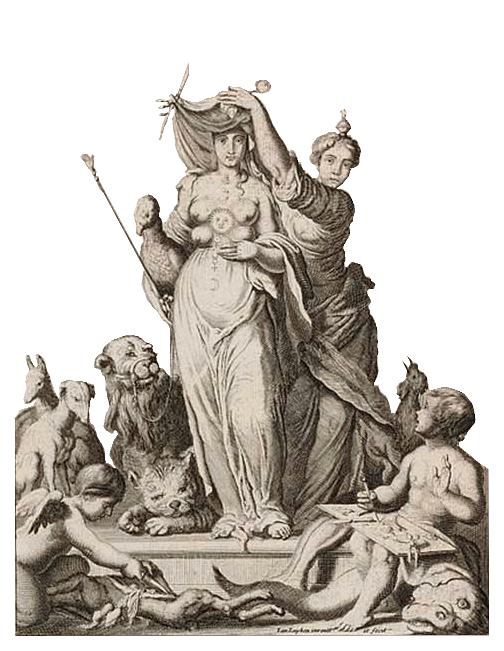

WELCOME TO THE LION SERUM COLLECTIVE
The Lion Serum Collective(tm) is not responsible for any injuries incurred, spiritual or physical, during the browsing of this site.
By: Koti
September 4th, 2021

If one were to plug “Russian rural homes” into Google, or DuckDuckGo if you’re paranoid about the Google corporation like myself, one would quickly notice a few things. The first would probably be the ornate window frames, even on houses that are decrepit and tawdry otherwise. The second would be the location of the fences. While the typical American property would have a front doorway and perhaps garage facing the street, with a fence only serving to enclose the yard, the typical rural Russian setup has the home’s doorway, if not the entire house, located within the fence. The third would be often pronounced entryways or antechambers, sometimes consisting of a jut from the main structure of the home.
In a folk legend, told to Dr. Ivanits by a Russian peasant in Kharkivska Oblast and recorded in her 1989 work Russian Folk Belief, the peasant details the story of a woman who went “out into the passageway [of her home] at night,”[1] and to the porch to admire the night sky, forgetting to cover her head with a veil. Suddenly realizing her immodesty, she went back to the passageway, only to find the domovoj, the Russian spirit of the home, waiting for her. The domovoj snatched her up to take her to the attic, but she managed to utter “God has risen,” and was released.
So what exactly do the peculiarities of Russian architecture and a legend about Russian women dressing immodestly have to do with one another? First, allow me to define liminal.
I’m certain you could look up the word and get a more academic definition, but in laymen’s terms, liminal is a descriptor for those things that are in between. A doorway or a hallway is a liminal space because it is in between two rooms or areas. Dawn and dusk are liminal times, being in between night and day. Someone who has just been born or is very old could be said to be in a liminal state. You get the idea.
On an unrelated note, there was an internet trend about “liminal spaces” about a year or so back, and from what I saw it seemed to have very little to do at all with actual liminal spaces and more to do with screenshots of photoshopped office building interiors or something. Not the first time the internet appropriates smarty-pants words for their stupid trendy Tumblr art, and it won’t be the last.
Back to the topic at hand, though. Russian architecture, domovoji, in-between spaces and times, what’s the connection?
Looking back to Russian Folk Belief, we can see that passages and passageways are mentioned in a significant number of the domovoj-related stories written down by Ivanits, such as the one quoted previously. We also see many mentions of the attic, specifically in regards to the attic being the domain of the domovoj – the attic being yet another liminal space. Just by the domovoj legends alone, we can see that the Russians strongly associated these liminal spaces with spirits, particularly the entryway of the home.
The importance of liminal spaces is not only limited to the domovoj. Another important liminal space for Russian folklore are bodies of water, which many folklores from around Europe consider to be a passageway between this world and the underworld, a feature Slavic paganism may have shared, although lack of material leaves it up to speculation. Beings like the rusalka reinforce the water-liminality connection, in their 19th-century incarnation being an “unclean spirit” [2] that is stuck between this world and the next, usually due to a horrific death by drowning.
The folklore of Russia, vestige of Slavic paganism it is, can help us to understand how some of the cosmology and spiritualism of the Slavs pre-Christian religion worked. Russia’s unique situation of being so sparsely populated is also a boon to the study of Slavic paganism, as the logistical difficulties of merely getting around that plagued Russia (and still does) meant many folk beliefs that would’ve otherwised been stamped out continued to be practiced well into the modern day, protected in isolation from the centers of power of Russian Orthodox Christianity.
These well-preserved folk tales also tell us something else; that the pre-Christian Slavs shared much of their beliefs with other peoples of Europe.
One can make the obvious comparisons between the domovoj and the ancient Roman lares, or the rusalka and the Greek nymphs, but the obsession with liminality also comes into play here. Take, for instance, the ancient Celts and their burial mounds, ubiquitous across much of western Europe and the British Isles. Like the Slavs, the pre-Christian Celts left nothing in terms of writing, but their post-conversion mythologies all reference an “otherworld”, filled with fairies and elves that would inspire the stories of Tolkien. This otherworld is frequently theorized to be the Celtic afterworld, and is often mentioned as being located underground. When combined with the fact that many burial mounds often contain a central passage within which leads to the grave, the connection is self-evident.
Another space of liminal significance to the Celts and Germanics was the bog, the bogs of Western and Northern Europe being the sites of dramatic discoveries of so-called “bog bodies”, bodies so well-preserved by the unique chemical makeup of peat as to appear to have only died recently. The archeaological benefits of ancient bodies and their possessions being preserved so well are immense, and they, combined with the sparse contemporary literary material available, can tell us about the liminality of bogs in the minds of Celts. Autopsies on bodies from pre-Christian Germany, possible thanks to excellent preservation, show that many were likely the victims of ritual sacrifices, with many examples of hanging or disembowelment, as corroborated in Tacitus’ Germania. Alongside sacrifices are many instances of sacrifices of inanimate objects, such as bronze jewelry, which indicate bogs as a liminal space between this world and the otherworld, their sacrifices therefore being transported for the utilization and pleasure of their gods.
In closing, I’d like to (attempt to) pin a reason on writing all of this material on one obscure belief of pagan Europe. When we think about not only the ancients, but any pre-modern group, we must understand them in their own terms – to use fancy academic terms, we must be emic rather than etic. Of course, any writer of history must be etic at some points to write a history able to be parsed by modern people, but a history without the emic element will be incomplete, a droll analysis of pottery and material culture doing its damndest to prevent the reader from conjuring an image of the societies that the scholar is studying at best, and a work full of anachronistic projections of modern sensibilities onto men who believed in divinating the future from spilled entrails at worst.
We as modern Western people are a secular people. Even those of us who are religious cannot escape it. We live in a world where Isis’ veil has been lifted, to use the metaphors of Renaissance scientists. To live in a world where there was no distinction between the natural and the supernatural is totally alien to us, and we must take this into account when we write on the ancient Slavs, or the Celts, or even the Christians or Muslims of the Middle Ages. Part of that is understanding that every aspect of the lives of people who lived before our age was governed absolutely by the supernatural, down to something so mundane as hallways, doors, windows, attics, ponds, and the ground itself.
In the world that came before, there were not simply trees or rocks or houses or statues. All these things had life to them, were part of the vast interconnected machinery operated by higher powers, and to fail to understand this aspect of pre-modern life is to fail to understand history at all.
[1] Ivanits, Linda J. Russian Folk Belief (M.E Sharpe, 1989), 169.
[2] Ivanits, 76.
